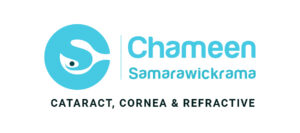Cataract is among the most common eye conditions affecting people worldwide, particularly those who are aging. The World Health Organization deemed cataracts responsible for well over half of all blindness all around the world. Despite the severity of this condition, cataract is treatable. Cataract surgeries provide safe and effective care for most people. With better awareness of what cataracts are, factors that increase cataract risk, and early signs of cataracts, an individual can improve diagnosis, management, and possibly prevent the condition from occurring in the first place.
What Are Cataracts?
Cataracts refer to a cloudiness of the eye’s natural lens, which is behind the iris and helps focus light onto the retina. In a healthy eye, the lens is transparent, and light passes through effortlessly. With cataracts, proteins and fibers in the lens break down and clump together. This causes light to scatter, resulting in vision that may appear blurry, hazy, or distorted.
Cataracts are most common in older adults. They often develop this condition gradually over the years. The effect on day-to-day activities can be quite inconvenient, making reading, driving, or recognizing faces difficult. The New England Journal of Medicine has confirmed that aging is the most prevalent cause of cataracts. However, some forms of diseases, medication, or lifestyle can also cause cataracts.
There are various types of cataracts, and it is important to note that each type ultimately affects the lens slightly differently:
- Nuclear cataracts – Develops in the center of the eye lens. They are strongly correlated with aging.
- Cortical cataracts – Develops along the edges of the eye lens and are often associated with glare and contrast sensitivity problems.
- Posterior subcapsular cataracts – Develops in the back of the eye lens and will progress faster than other forms of cataracts, especially in those with diabetes or taking steroids.
- Congenital cataracts – These are cataracts that are present at birth or develop in childhood. They are often a result of genetic causes and/or infections during pregnancy.
Factors that Increase Risk for Cataracts
Age is the primary factor, but there are various other considerations that contribute to cataract development. Recent studies shared in JAMA Ophthalmology and The British Journal of Ophthalmology outline the following risk factors that can increase the likelihood of cataracts:
Age and Family History
Risk for cataracts increases sharply after age 60, and people with a family history of cataracts might have a higher chance of developing this condition.
Health Conditions
- Diabetes is associated with earlier- and more aggressive- cataract formation.
- Hypertension and obesity are also linked to increased rates of cataracts.
Lifestyle
Long-term UV radiation exposure without protection causes cumulative damage to the lens.
- Smoking doubles the risk of cataract development.
- High levels of alcohol consumption have been associated with increased oxidative stress to the lens.
Medication and Eye Injury
Chronic use of some corticosteroids, cholesterol medications, and psychiatric medications may result in cataracts. Any prior trauma to the eye or damage from surgery can have effects on lens physiology.
Nutrition
Research suggests that a diet lacking in antioxidants like vitamins C and E may create an environment in the lens that is more vulnerable to oxidation.
Early Symptoms of Cataracts
Identifying early signs of cataracts is important for timely treatment. Often, the symptoms will develop slowly to the point that they could be mistaken for normal vision changes. The most common early symptoms will include:
- Notable blurry or cloudy vision
- Increased glare sensitivity, even in good light
- Difficulty driving at night due to halos around the headlights
- Colors that appear faded or yellowish
- Double vision in one eye
- Frequent changes to eyeglass prescriptions
While these signs are easy to miss, routine eye exams, especially in individuals over 40, it is easy to detect symptoms before there is significant vision loss. The American Journal of Ophthalmology goes so far as to believe that regular eye exams could reduce the risk of cataract blindness.
Management and Treatment
In the early stages, simple alterations such as brighter lights, stronger glasses, or anti-glare lenses may provide relief from symptoms. However, cataracts are progressive, and definitive treatment will ultimately require surgery.
Cataract surgery involves removing the cloudy lens and replacing it with an artificial intraocular lens (IOL). This is a minimally invasive outpatient procedure that has an exceedingly high success rate. Advances in surgical techniques now allow for new-age IOLs that can correct presbyopia and astigmatism complaints and improve quality of life.
For more detailed recommendations, consider researching more about “What should you expect after undergoing cataract surgery?” This will help you understand the healing process and recommendations patients should follow after surgery.
Methods for Lifestyle and Prevention
Although not all cataracts can be prevented, clinical studies have shown that certain lifestyle changes may reduce risk or slow progression:
- Wearing sunglasses that filter UV light
- Quitting smoking and limiting alcohol
- Keeping blood sugar levels under control in diabetic patients
- Following an antioxidant-rich diet, such as leafy greens, citrus, and nuts
- Having regular comprehensive eye examinations
For additional information on the mechanisms involved in cataract development, read more about cataract: understanding the causes and symptoms and learn about the biological mechanisms underlying lens clouding.
Final Thoughts:
Cataract is mostly an outcome of aging that leads to vision loss, but it can be prevented if managed properly. By learning what cataracts are, factors that increase cataract risk, and early signs of cataracts, individuals can proactively seek treatment.
If cataracts are diagnosed early, and individuals modify some aspects of their lifestyle, they can opt for treatment options with a high rate of success and restore vision to continue leading active, full lives.

Definitely one of the best explanations out there.